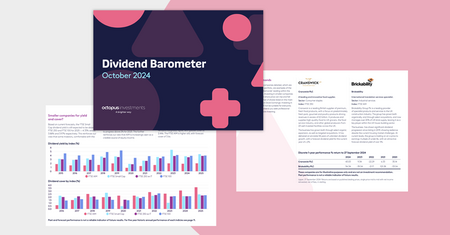A complete guide to the Enterprise Investment Scheme (EIS)
Learn about which companies qualify, the benefits, how to invest, risks, tax relief and transferral or inheritance of EIS shares
What is the Enterprise Investment Scheme?
The Enterprise Investment Scheme (EIS) is a government initiative that provides a valuable source of funding to early-stage companies while offering tax benefits to investors. This guide marks out which companies qualify, the benefits, how to invest, risks, tax relief and transferral or inheritance of EIS shares.
The case for early investment
One of the best ways to significantly increase personal wealth is to make an early investment into shares of a small business that goes on to achieve big growth. The earlier you invest, the more value can flow to you as a shareholder. However, you should keep in mind EIS investments are high risk. The value of an investment can rise as well as fall, potentially to zero.
Launched in 1994, the Enterprise Investment Scheme (EIS) makes investing in shares in early-stage businesses even more attractive. When an early-stage business is EIS-qualifying, you can claim a number of tax reliefs alongside your investment, including upfront income tax relief, tax-free capital gains, and loss relief on each investment that returns less than you invested. Please remember tax rules may change in the future, and the value of tax reliefs depends on your individual circumstances.
Why EIS exists
The government offers EIS tax reliefs to encourage people to invest in early-stage businesses with high growth potential. They do this because smaller businesses that mature into successful, established companies create jobs and stimulate economic growth in the UK.
Since EIS was launched, more than 53,000 qualifying early-stage businesses have benefitted from £30 billion of investment.1 In 2021-22 alone, £2.3 billion was raised by companies that qualify for EIS.
By making an EIS-qualifying investment, you have the potential to grow your own wealth – and to support future UK economic growth too.
Introduction to EIS
Introduction to EIS-qualifying companies
This section explains the rules for EIS eligibility and how invested funds must be used.
What kind of company qualifies for an EIS investment?
Investing in EIS
Investing in EIS
Learn about the different ways of participating in EIS and why you might consider it as an investment. It’s important to know that EIS investments are high risk. You can find out more about those risks in this section.
Two ways to invest in EIS
Why invest in EIS?
Understanding the risks of EIS
EIS and tax
Income tax, capital gains tax and inheritance tax
Learn the basics about income tax, capital gains tax and inheritance tax, and how they relate to EIS investments.
Income tax, capital gains tax and inheritance tax: the basics
EIS tax relief
EIS tax relief
Investors in EIS can benefit from five different tax reliefs if they invest in an EIS-qualifying company: income tax relief, tax-free growth, loss relief, capital gains deferral, and inheritance tax relief.
EIS tax relief
EIS loss relief
How and when to claim EIS tax relief
Transferring or inheriting EIS shares
Transferring or inheriting EIS shares
If you want to transfer ownership of an EIS investment, there are certain rules that apply to the tax reliefs. These rules define how the original investor and beneficiary are affected, which depends on whether the EIS investment is a gift or inheritance.
Married spouses and EIS shares
Other beneficiaries and EIS shares
Before investing in EIS
Before investing in EIS
Learn about the important factors you need to consider when choosing an EIS investment.
Things to consider when choosing an EIS investment
EIS investments put capital at risk
The value of an investment, and any income from it, can fall as well as rise. Investors may not get back the full amount they invest.
Tax treatment depends on individual circumstances and might change in the future. Tax reliefs depend on companies maintaining their EIS-qualifying status.
Shares in smaller companies can fall or rise in value more than other shares listed on the main market of the London Stock Exchange. They may also be harder to sell.
Investors need to hold shares for three years to keep any tax reliefs claimed. Investors should be prepared to hold their shares for significantly longer to allow time for growth and exit.
Follow the links below for more information on investing in the Enterprise Investment Scheme:
- Download our guide to Enterprise Investment Schemes
- Investing in Enterprise Investment Scheme
- Download our brochure on Tax Benefits of EIS Investments
- Investing in Enterprise Investment Scheme
- Download our brochure on Tax Benefits of EIS Investments
- Try out our EIS Calculator to see how much tax relief your clients could claim on their EIS investment
1 National statistics: Enterprise Investment Scheme, Seed Enterprise Investment Scheme and Social Investment Tax Relief statistics, HMRC, 17 May 2023

Contact our team
Got a question?
Call us on 0800 316 2067

Contact our team
Got a question?
Call us on 0800 316 2067




